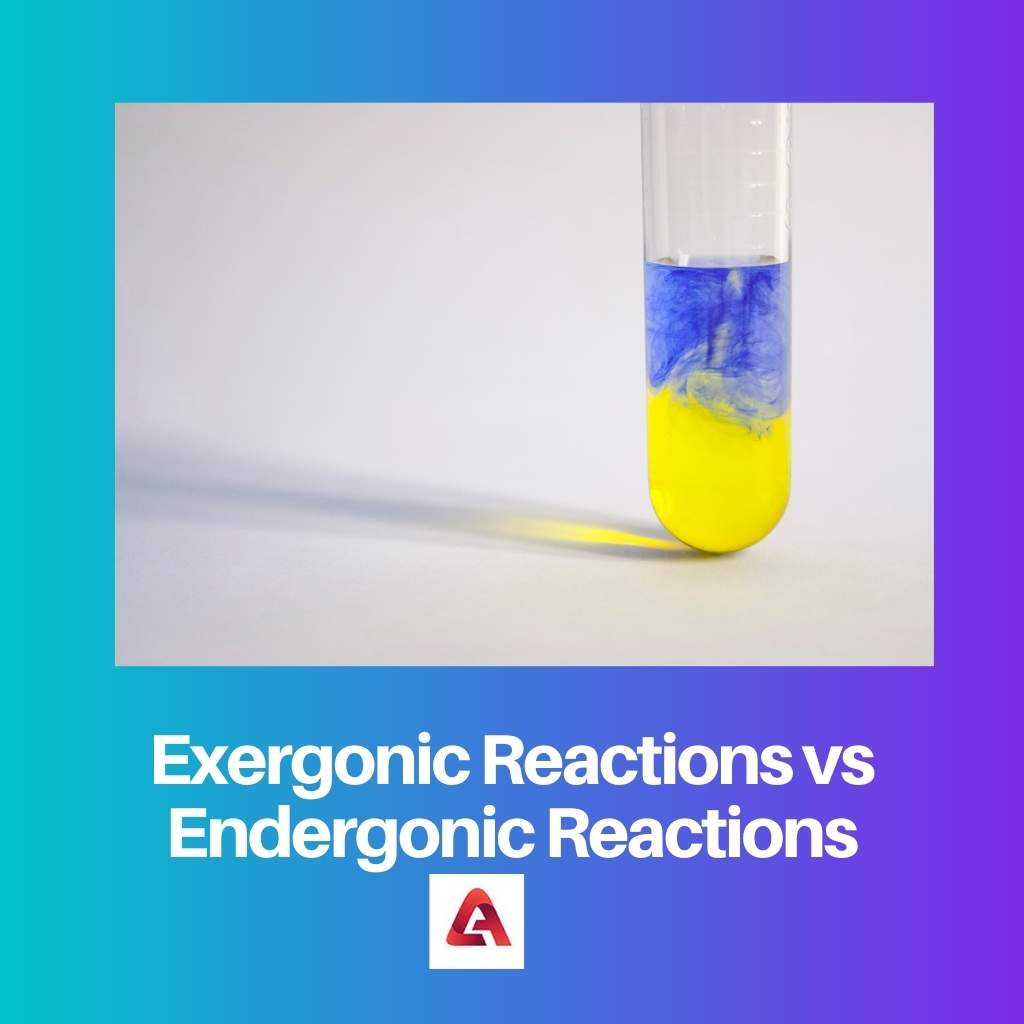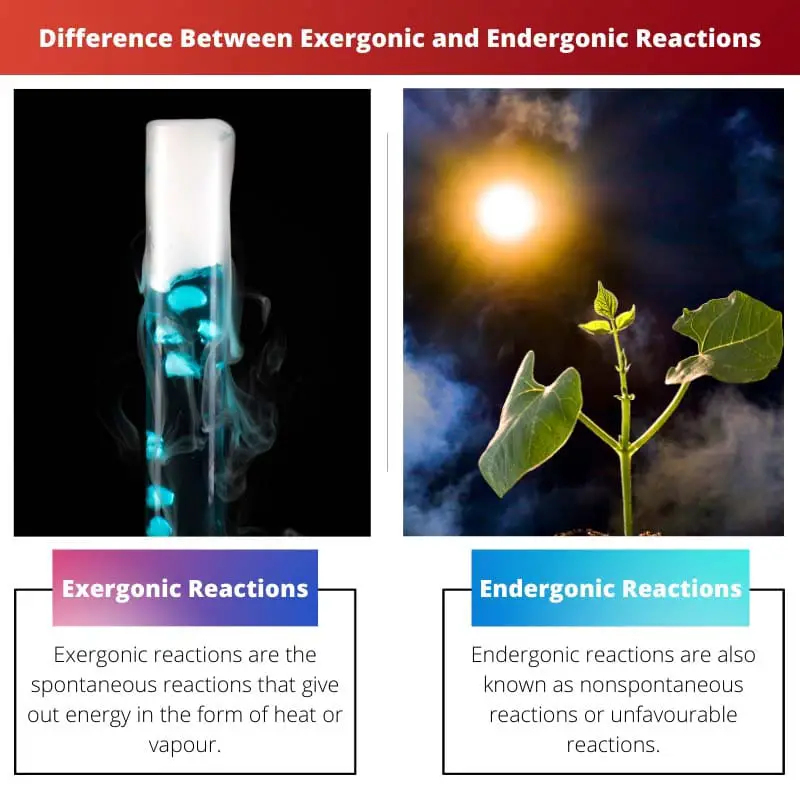Two kinds of reactions are described by the words endergonic and exergonic. Many chemical and biological interactions occur continually both within and outside the human body.
This article uses a descriptive table to distinguish the fundamental and advanced distinctions between the two reactions for ease of learning and comprehension by a novice as well as a chemical enthusiast.
Key Takeaways
- Exergonic reactions release energy, whereas endergonic reactions absorb energy from their surroundings.
- Exergonic reactions have a negative Gibbs free energy change, while endergonic reactions have a positive one.
- Endergonic reactions are non-spontaneous, whereas exergonic reactions are spontaneous under given conditions.
Exergonic Reactions vs Endergonic Reactions
Exergonic reactions are chemical reactions in which the change in free energy is negative, or there is a net release of free energy and indicates a spontaneous reaction. Endergonic reactions are reactions in which the standard change in free energy is positive, and a driving force is needed to perform this.

A reaction that generates free energy is known as an ‘exergonic’ reaction. Since this reaction produces energy rather than consuming it, it may happen on its own, without the intervention of other forces.
Exergonic reactions in biochemistry, as well as thermochemistry, are those in which the change in free energy is negative (minus in numerical value).
These are not involuntary reactions that are nonspontaneous. To get started, they need exertion or a force input – in the form of energy.
The common role of an endergonic reaction is to liberate energy from carbohydrate molecules or any supposed food molecule, allowing creatures to thrive without relying solely on sunlight for energy.
Comparison Table
| Parameters of Comparison | Exergonic Reactions | Endergonic Reactions |
|---|---|---|
| Definition | Exergonic reactions are the spontaneous reactions that give out energy in the form of heat or vapour. | Endergonic reactions are also known as nonspontaneous reactions or unfavourable reactions. The reaction necessitates further energy than you receive |
| Gibbs Free Energy | Value of Gibbs Free Energy is negative. | Value of Gibbs Free Energy is positive. |
| Entropy Level | The level of entropy is increased in a typical exergonic reaction. | Entropy is decreased in an endergonic reaction. |
| Energy Requirement | Gives out energy in the form of heat. | Intakes energy through the surroundings for initiation of the reaction or the continuation of it. |
| Examples | The reaction of sodium and chlorine to make table salt, combustion, and chemiluminescence. In this reaction energy is released in the form of light. | The chemical reaction of photosynthesis is a good example for endergonic reactions. |
What is Exergonic Reactions?
Exergonic are irreversible reactions that occur naturally in the environment. The term “spontaneous” refers to something ready or eager to occur with little or no external stimulation.
When subjected to oxygen in the atmosphere, sodium, for example, will burn. Another instance of exergonic reactions is the smoking of wood.
Under standard temperature and pressure, the Gibbs free energy is zero, indicating that more heat is taken than absorbed. These are responses that cannot be reversed.
Living organisms employ exergonic processes to transport energy from “storage” in one component, such as fat or sugar, to an activated state, such as ATP.
What is Endergonic Reactions?
A process in which heat or any form of energy is absorbed is known as an endergonic reaction. This means that the overall change in free energy is positive in chemical terms.
Many processes in nature can only take place if adequate energy from the environment is available.
External energy aids in the dissolution of these connections. The energy released as a result of the bond breaking then fuels the reaction.
In the instance of endergonic reactions, this Gibbs free energy is positive (+), indicating that the reaction is not spontaneous.
Main Differences Between Exergonic and Endergonic Reactions
- In exergonic reactions, entropy increases, whereas in endergonic reactions, entropy decreases.
- The energy of the products of an exergonic reaction is more than the reactants, whereas the energy of products is less than the reactants in the case of endergonic reactions.


This article presents a thorough analysis of exergonic and endergonic reactions, shedding light on their significance in chemical and biological interactions.
This article provides an insightful and comprehensive explanation of exergonic and endergonic reactions. The comparison table and examples are particularly helpful in understanding the key differences.
The article is very informative and well-structured. The clear distinction between exergonic and endergonic reactions makes it easier for readers to grasp the concepts.
The article’s elucidation of exergonic and endergonic reactions is commendable, offering a proficient understanding to readers about the chemical and biological processes they govern.
The article adeptly explains the dichotomy between exergonic and endergonic reactions, exemplifying their implications in various natural phenomena.
The article’s explanation of exergonic and endergonic reactions is very articulate and educative. The real-life examples provided serve as practical illustrations, contributing to a better grasp of the concept.
The comprehensive comparison between exergonic and endergonic reactions is commendable, elucidating the core disparities with precision and clarity.
The detailed comparison table effectively highlights the fundamental disparities between exergonic and endergonic reactions, catering to readers with varying levels of expertise. The use of descriptive examples further enhances understanding.